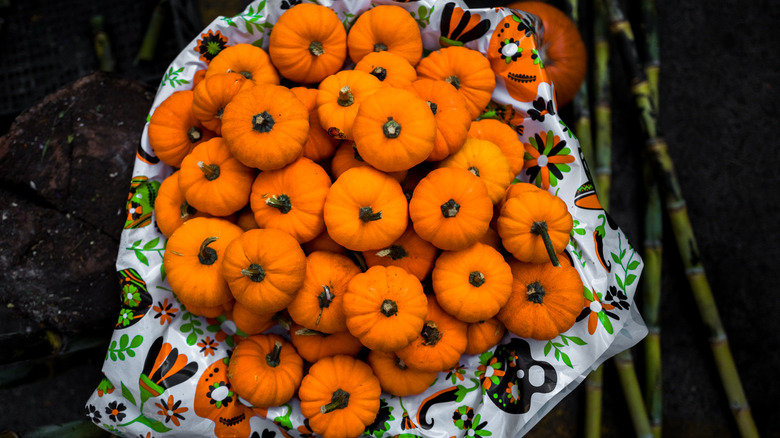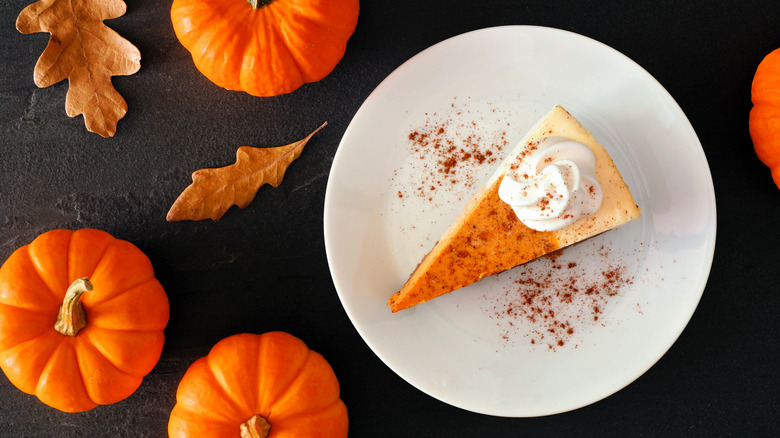Is There Any Difference Between Carving Pumpkins And Pie Pumpkins?
When most people think of pumpkins, the image of a plump, round, orange gourd probably comes to mind. According to culinary scientist Jessica Gavin, that variation is only one of the dozens of varieties of edible pumpkins. With the names of each species varying from Blue Doll to Sugar Pie and even Cinderella, these pumpkins each have distinct characteristics that set them apart.
In the midst of the fall season, many of us are looking to buy one of these pumpkins, whether to carve it up for Halloween night or cut it into pieces to slip into some pumpkin soup. When it comes to pumpkins, most look alike. But Gavin says that there are some types of pumpkins that are best for cooking or carving. Whatever your intention, it's always good to know what you're buying. So, which pumpkin is which? And does it really matter which kind you use?
Not all pumpkins are created equal
If you want your pumpkin dessert to be the best it can be, make sure you're buying the right ingredients. For the most familiar flavors, it's best to use a sugar pie pumpkin for most recipes, according to Almanac. Also called sugar pumpkin, these varieties will be available at most grocery stores. In an interview with ABC 6 in Philadelphia, a Whole Foods representative claimed that sugar pumpkins are cultivated specifically for use in recipes and have a much thicker flesh than other varieties. This makes them the most ideal to use for cooking. If you want to be extra sure you're buying right, remember that these pumpkins are much smaller and rounder than the big carving ones you see lit up at night.
However, if you are in a pinch, you can actually use those carving pumpkins in your recipe too, says HuffPost. However, keep in mind that these are typically less sweet and much stringier than sugar pumpkins, so it's best to just save them for carving or roasting pumpkin seeds.

